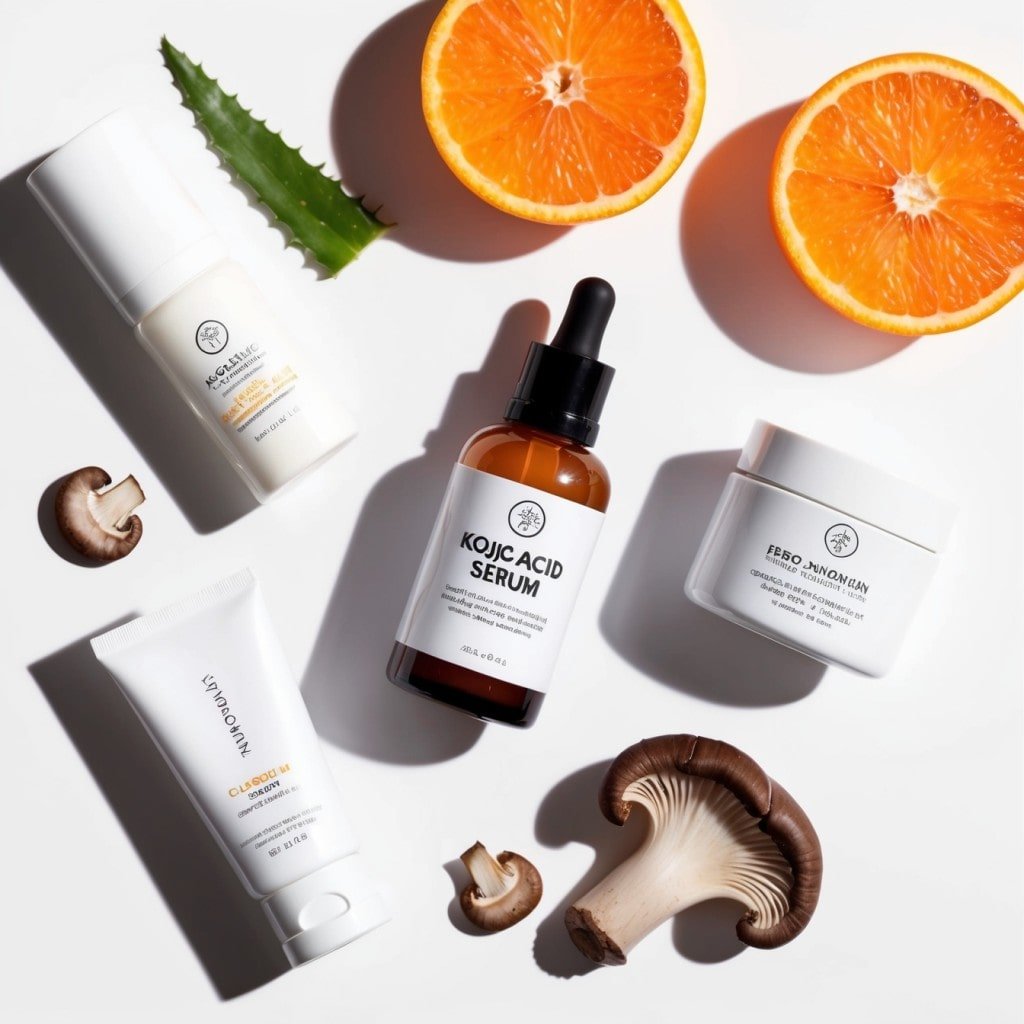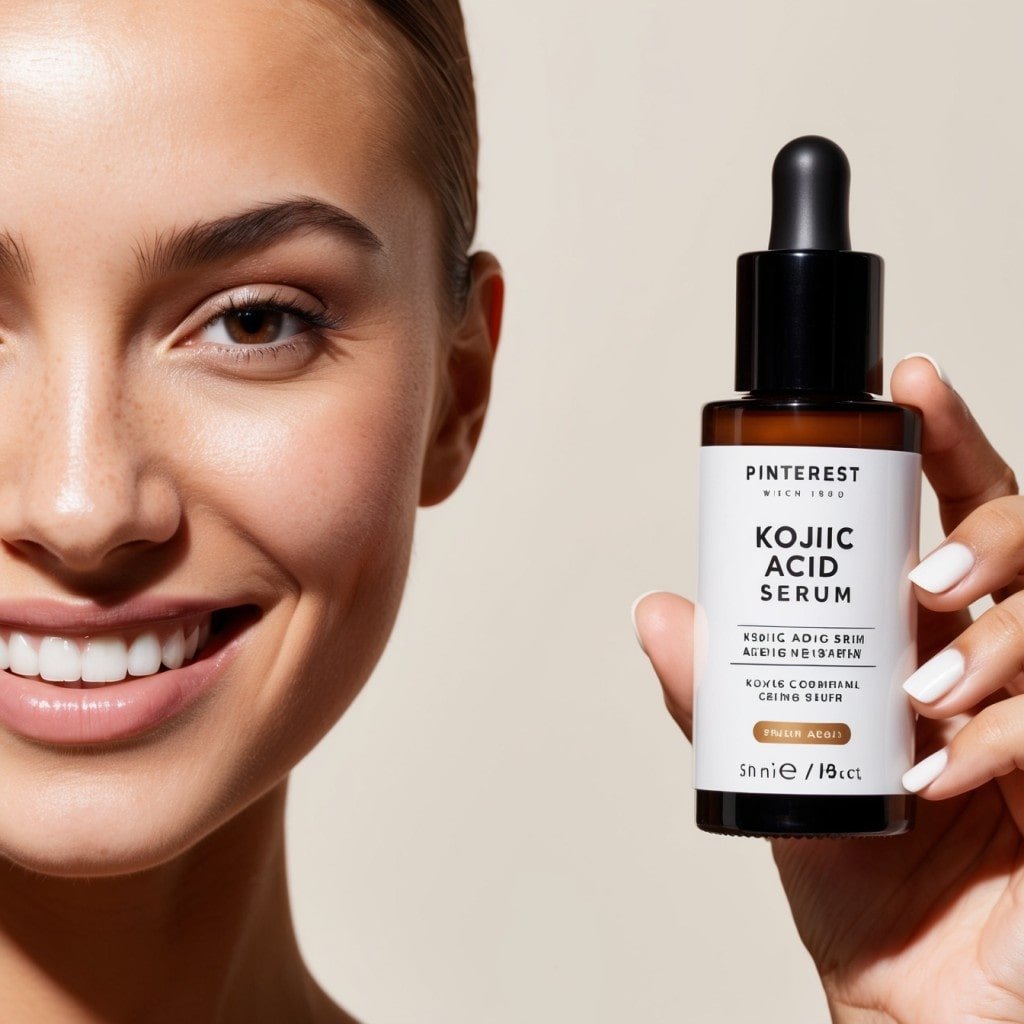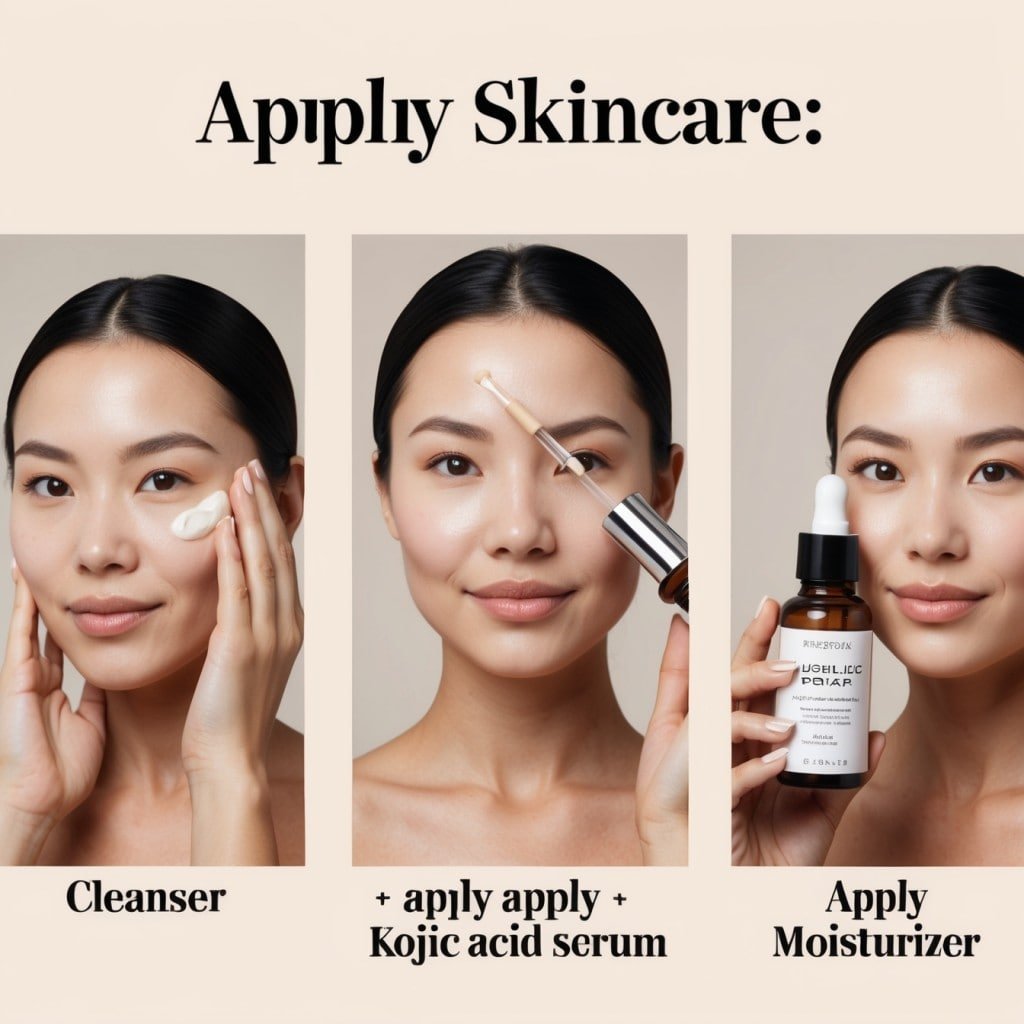When it comes to achieving a brighter, more even complexion, few ingredients are as effective as kojic acid. As more people seek solutions for hyperpigmentation, dark spots, and uneven skin tone, understanding how to add kojic acid into skincare routines has become essential. Derived from fungi, kojic acid is a potent skincare ingredient with a well-documented ability to lighten and brighten the skin. This guide will walk you through everything you need to know about safely and effectively incorporating kojic acid into your skincare regimen.
Why Kojic Acid is Popular
Kojic acid’s popularity in the skincare world is due in large part to its effectiveness in treating hyperpigmentation and its gentle, natural origins. Unlike some harsher chemical alternatives, kojic acid offers a more natural approach to brightening the skin and reducing the appearance of dark spots. It’s a go-to solution for those seeking to improve their skin tone without resorting to more invasive treatments.
What Makes Kojic Acid Effective?
Kojic acid works by inhibiting the enzyme tyrosinase, which is responsible for melanin production in the skin. By reducing melanin synthesis, kojic acid helps to lighten existing dark spots and prevent new ones from forming. This makes it an excellent choice for those dealing with issues such as sunspots, age spots, and post-inflammatory hyperpigmentation. For more information on the research behind kojic acid’s skin benefits, you can refer to this research on Kojic Acid’s Skin Benefits.
Benefits of Adding Kojic Acid to Skincare

Integrating kojic acid into your skincare routine can provide several benefits, including:
- Reduction of Dark Spots: Kojic acid is particularly effective at fading dark spots and other forms of hyperpigmentation.
- Even Skin Tone: Regular use of kojic acid can lead to a more uniform complexion, reducing the appearance of uneven skin tone.
- Antioxidant Properties: Kojic acid also has antioxidant effects, which help protect the skin from environmental damage and premature aging.
How to Add Kojic Acid into Your Skincare Routine
Incorporating kojic acid into your skincare routine requires a thoughtful approach to ensure that you get the most benefit with minimal risk of irritation. Here’s how to do it effectively.
Step-by-Step Guide for Beginners
For those new to kojic acid, the process of adding it into your skincare routine should start slowly. Begin by using a product with a lower concentration of kojic acid, especially if you have sensitive skin. Over time, as your skin builds tolerance, you can gradually increase the frequency or concentration.
Starting with a Patch Test
Before applying kojic acid products to your entire face, it’s crucial to perform a patch test. Apply a small amount of the product to an inconspicuous area of your skin, such as the inside of your wrist or behind your ear. Wait 24 to 48 hours to check for any adverse reactions like redness, itching, or irritation. If no negative reaction occurs, you can begin to use the product on your face.
Understanding Your Skin Type and Needs
Different skin types respond differently to kojic acid. Those with oily or combination skin may tolerate kojic acid well, while those with dry or sensitive skin should proceed with caution. Understanding your skin type will help you choose the right product and frequency of use. For example, someone with oily skin might opt for a kojic acid serum, while someone with sensitive skin might prefer a kojic acid-infused cream.
Types of Kojic Acid Products
There are several forms of kojic acid products available, each designed to fit into different stages of your skincare routine. Here’s a breakdown of the most common types:
Kojic Acid Serums: How to Use Them
Serums are highly concentrated treatments designed to deliver active ingredients deep into the skin. A kojic acid serum is often the best choice for targeting specific areas of hyperpigmentation. To use, apply the serum after cleansing and toning, but before moisturizing. Start by using it every other day, and gradually increase to daily use if your skin tolerates it well.
Kojic Acid Creams: Application Tips
Kojic acid creams are generally less concentrated than serums and are ideal for those with sensitive skin or for use on larger areas of the face or body. Apply kojic acid cream after cleansing and toning, and always follow up with sunscreen during the day. The cream can be used both in the morning and evening, depending on your skin’s tolerance.
Kojic Acid Soaps: When and How to Use
Kojic acid soaps are a popular option for those looking to treat hyperpigmentation on the body as well as the face. These soaps can be used in place of your regular cleanser, but because they can be drying, it’s important to follow up with a good moisturizer. Use kojic acid soap once a day at first, and increase usage as your skin builds tolerance.
Kojic Acid Masks: Benefits and Usage
For a more intensive treatment, kojic acid masks offer a higher concentration of the active ingredient. These masks are typically used once or twice a week and can provide an immediate brightening effect. Apply the mask to clean skin, leave it on for the recommended time, and then rinse off with warm water. Follow with your usual skincare routine, including a moisturizer to lock in hydration.
Best Time to Use Kojic Acid in Your Routine
Understanding when to apply kojic acid in your skincare routine can make a significant difference in its effectiveness.
Morning vs. Evening Application
Kojic acid can be used both in the morning and evening. However, because it can make your skin more sensitive to the sun, many experts recommend using it at night. If you choose to use kojic acid in the morning, be sure to follow up with a broad-spectrum sunscreen to protect your skin from UV damage.
How Often Should You Use Kojic Acid?
The frequency of use depends on your skin’s tolerance. Beginners should start by applying kojic acid every other day, gradually increasing to daily use as the skin adjusts. It’s important not to overuse kojic acid, as this can lead to irritation or dryness.
Ideal Pairings with Kojic Acid
Kojic acid works well with several other skincare ingredients, which can enhance its effects or mitigate potential side effects. For example, combining kojic acid with hyaluronic acid can help keep the skin hydrated, reducing the risk of dryness and irritation. Vitamin C is another excellent pairing, as it can boost kojic acid’s brightening effects.

Safety Precautions When Using Kojic Acid
While kojic acid is generally safe, there are some precautions you should take to avoid potential side effects.
Potential Side Effects to Watch For
Some common side effects of kojic acid include redness, irritation, and a tingling sensation. These side effects are usually mild and temporary, but if they persist, you should discontinue use and consult with a dermatologist.
Tips to Avoid Irritation
- Start Slowly: Introduce kojic acid gradually into your routine to allow your skin time to adjust.
- Use Moisturizer: Always follow up with a moisturizer to maintain your skin’s hydration levels.
- Avoid Overuse: Stick to the recommended frequency of use to prevent irritation or worsening of skin conditions.
Sunscreen: A Non-Negotiable
Because kojic acid can make your skin more sensitive to the sun, applying sunscreen is essential. Use a broad-spectrum sunscreen with at least SPF 30 every day, even on cloudy days or when you’re indoors. This will protect your skin from further pigmentation issues and help kojic acid work more effectively. For a list of dermatologist-recommended sunscreens for sensitive skin, check out this guide.
How to Combine Kojic Acid with Other Skincare Products
Kojic acid can be combined with other skincare products, but it’s important to do so thoughtfully to avoid irritation. For more guidance on safe combinations of cosmetic ingredients, refer to this FDA resource on safe cosmetic ingredients for hyperpigmentation.
Kojic Acid and Vitamin C
Vitamin C is known for its brightening properties and can be a powerful ally when used alongside kojic acid. Apply vitamin C in the morning and kojic acid at night to maximize the benefits while minimizing the risk of irritation.
Kojic Acid and Retinol
Retinol is another powerful skincare ingredient, known for its anti-aging benefits. However, both retinol and kojic acid can be potent, so it’s best to use them at different times of the day—retinol at night and kojic acid in the morning. Always follow with sunscreen during the day to protect your skin.
Kojic Acid and Hyaluronic Acid
Hyaluronic acid is a hydrating ingredient that pairs well with kojic acid. It can help to counteract any dryness or irritation caused by kojic acid, keeping your skin plump and moisturized. Apply hyaluronic acid after kojic acid in your routine for the best results.
Expected Results and Timelines
Patience is key when using kojic acid. While it’s a powerful ingredient, it works gradually.
How Long Until You See Results?
Results from kojic acid typically become visible after 4 to 6 weeks of consistent use. You may notice a gradual lightening of dark spots and an overall brighter complexion. However, individual results can vary based on your skin type, the concentration of kojic acid, and how often you use it.
Tips for Maximizing Kojic Acid Benefits
- Be Consistent: Regular use is crucial for seeing results with kojic acid.
- Sun Protection: Always use sunscreen to protect your skin and enhance the effects of kojic acid.
- Stay Hydrated: Keeping your skin well-hydrated will help prevent any dryness or irritation from kojic acid.
What to Do If You Experience a Reaction
If you experience a reaction, such as severe redness, itching, or a burning sensation, discontinue use immediately. Apply a soothing moisturizer, and consult with a dermatologist if the symptoms persist. They may recommend a lower concentration or suggest alternative treatments.
Frequently Asked Questions
Is Kojic Acid Safe for Long-Term Use?
Yes, kojic acid is generally safe for long-term use. However, it’s important to monitor your skin’s reaction and adjust your routine if you notice any irritation.
Can You Use Kojic Acid with Other Acids?
Kojic acid can be used with other acids, but it’s important to introduce them gradually to avoid over-exfoliating the skin. Pairing with hyaluronic acid can help maintain hydration.
How Often Can You Use Kojic Acid?
Most people can use kojic acid daily, but it’s best to start with every other day to see how your skin reacts.
Is Kojic Acid Suitable for All Skin Types?
Kojic acid is suitable for most skin types, but those with very sensitive or dry skin should use it cautiously and consider starting with a lower concentration.
Can Kojic Acid Make Skin Darker?
No, kojic acid works to lighten the skin by reducing melanin production. However, if it causes irritation, it can lead to temporary darkening as the skin heals.
What Concentration of Kojic Acid is Best?
A concentration of 1-2% kojic acid is effective for most people. Higher concentrations are available but should be used under the guidance of a dermatologist.
Conclusion
Adding kojic acid into your skincare routine can be an effective way to achieve a brighter, more even complexion. By carefully selecting the right products and following a consistent routine, you can harness the full benefits of kojic acid while minimizing any potential side effects. Remember, patience and protection are key—give the product time to work and always protect your skin with sunscreen.

